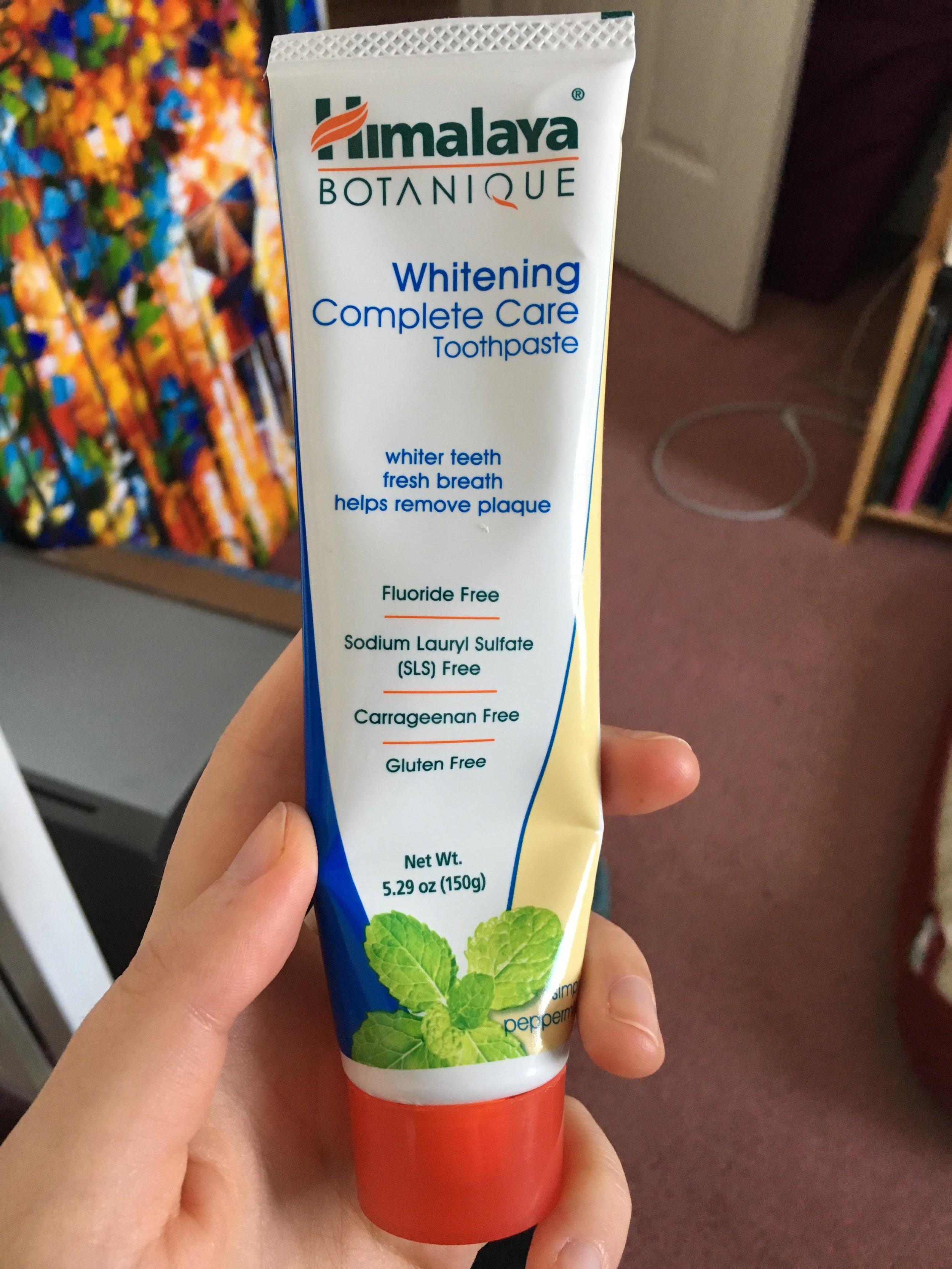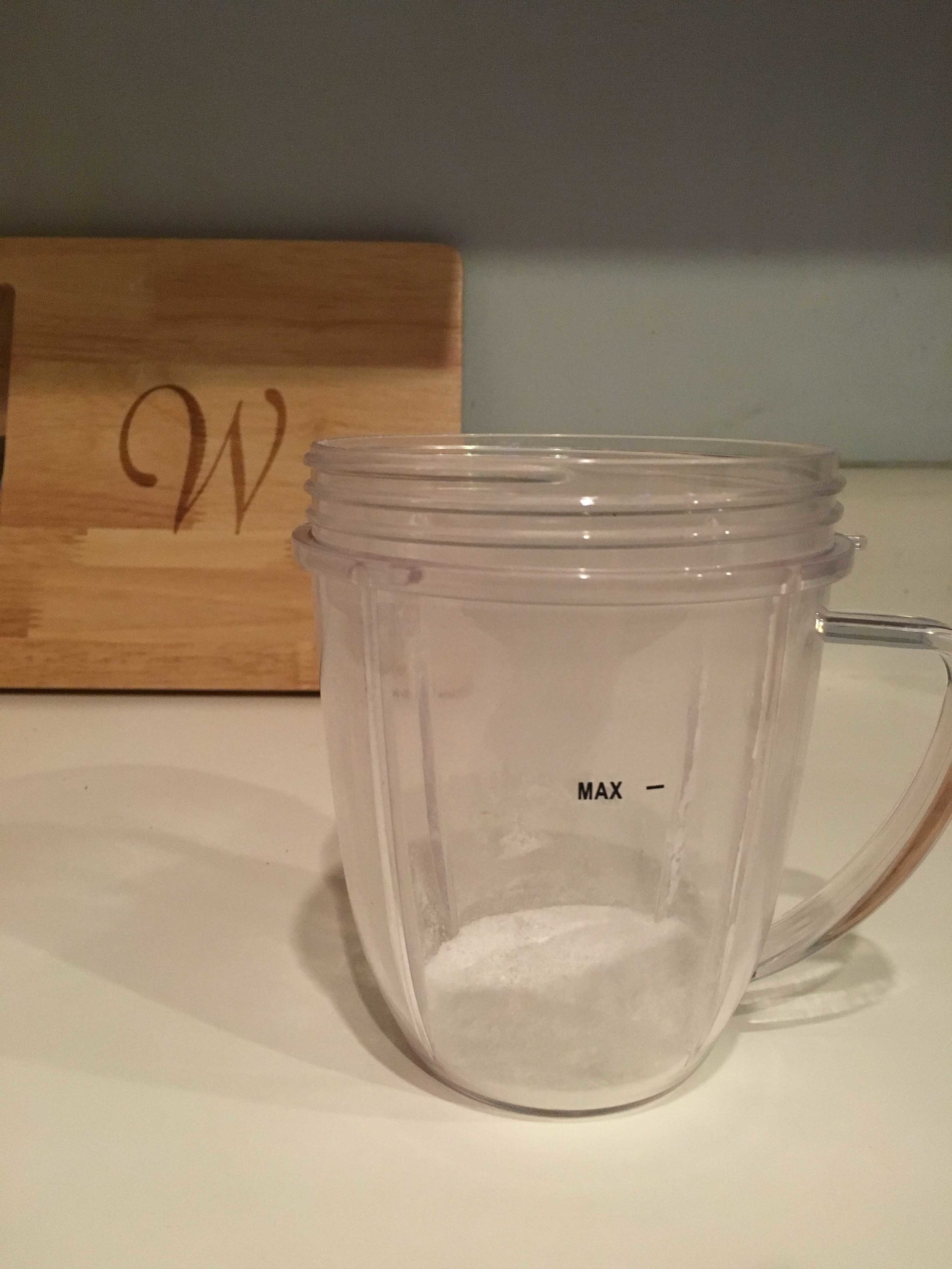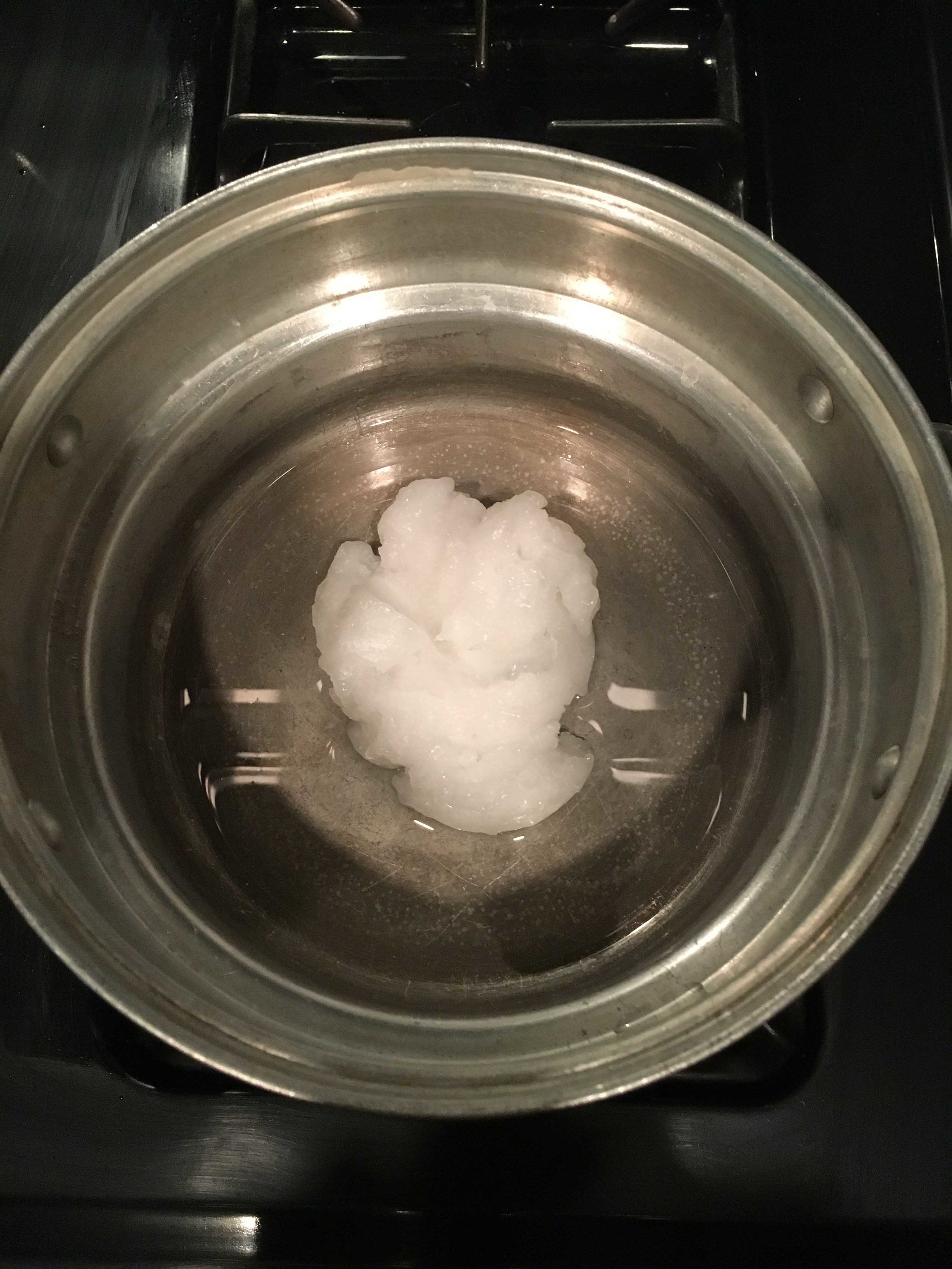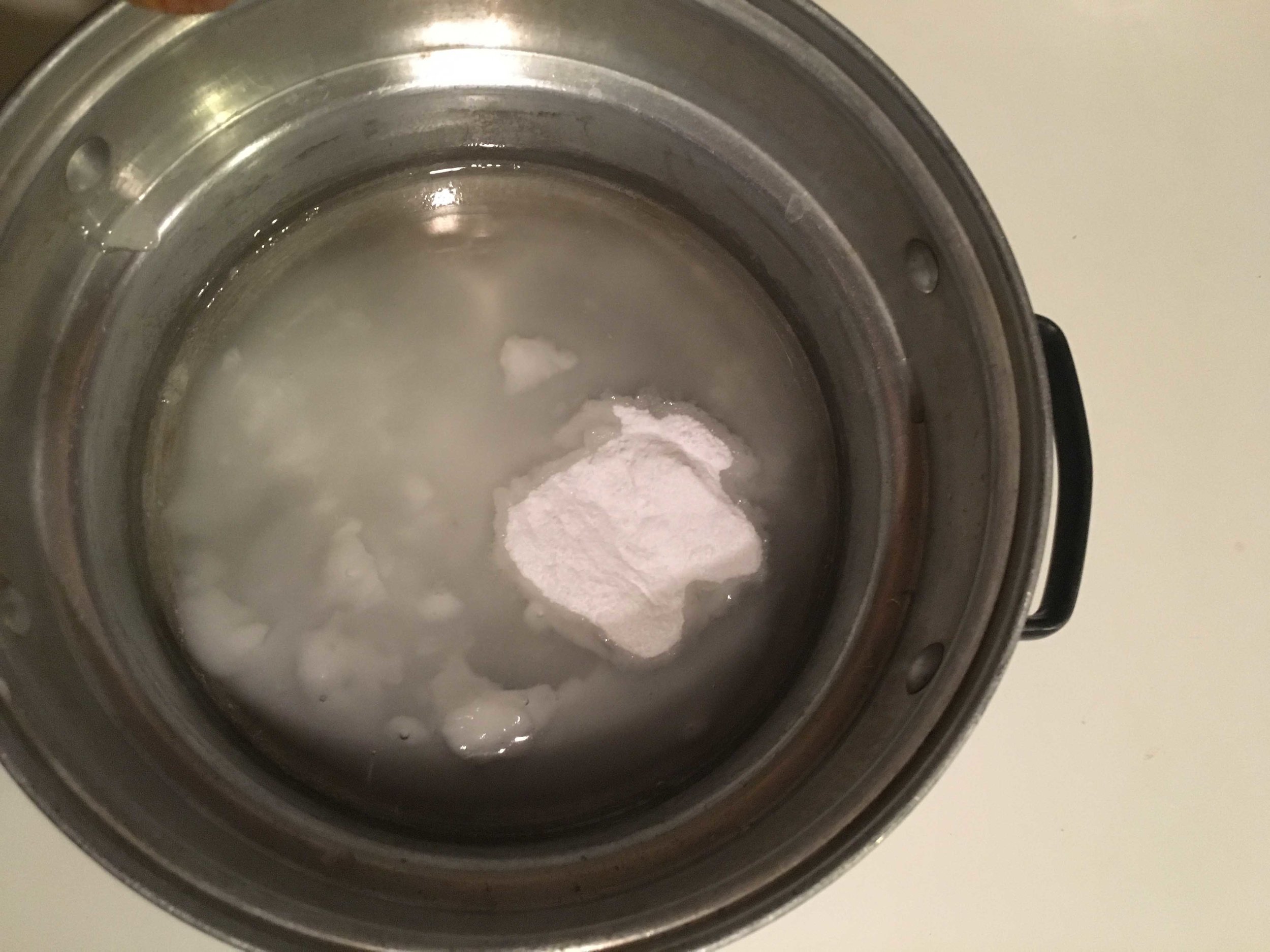Do you know what's in your toothpaste?
I recently bought a supposedly "healthy" toothpaste thinking I was doing a good thing for my body. Of course they were marketing toward people like me, listing on the front of the package that their product was fluoride free, sodium lauryl sulfate (SLS) free, carrageenan free (I don't even know what that is), and gluten free.
I bought this toothpaste right after I decided I couldn't tolerate the homemade toothpaste I'd made a week before. It was extremely salty and started staining towels from the cacao powder (recipe below). I was short on time and decided to try out a recommended toothpaste from a health food market down the street. Later that night I whipped out my toothpaste, excited to try something new that was also supposed to be healthy for my body. I turned over the plastic toothpaste tube and started reading the ingredients list that was about as long as the Declaration of Independence. Now obviously I'm joking but I wholeheartedly expected to see something like 5 to maybe 10 ingredients, but instead I found 29 ingredients!
Himalayan Botanique Toothpaste ingredients
Instead of trying to rely on businesses to provide healthy, sustainably produced, packaged and sourced products, I have resorted to making my own products. It's not only cheaper, but I have complete control over where each ingredient comes from, I know the exact purpose of each ingredient, and I get to chose how it's stored.
My Homemade Dentist Approved Zero Waste Toothpaste Recipe
INGREDIENTS
1/2 cup Organic, unrefined, virgin Coconut Oil* (reusable glass jar) - used for removing harmful bacteria, reducing plaque buildup, and preventing tooth decay
2 Tbsp Pure Baking Soda* (in biodegradable box) - used as a light abrasive to whiten teeth and balance mouth pH level
1 Tbsp Non-GMO Xylitol* (unfortunately was packaged in non-recyclable individual plastic packets, box will be recycled - Let me know in the comments if you find a better packaging solution for this product!) - used to prevent tooth decay and provide natural sweetening that wont break down like sugar does, neutralize pH level in mouth (WARNING: Xylitol is toxic to pets so please use with caution!)
10 Drops Pure Eucalyptus Essential Oil* (in glass bottle) - used as antibacterial, anti-fungal, antiseptic, antiviral, anti-inflammatory and decongestant - used to prevent gum disease, reduce plaque, and add a refreshing taste!
DIRECTIONS
Heat water in a double boiler. In the meantime blend xylitol into a fine powder. This is to help it blend into the mixture.
Add coconut oil to heated double boiler. Stir consistently as it wont take long to melt.
Once melted, take double boiler off heat, add baking soda and xylitol and stir until blended.
Add essential oil making sure to mix well.
Pour mixture into a jar with a tight lid.
During hardening, be sure to stir up the mixture a few times as the baking soda tends to sink to the bottom. To prevent this you could soften the oil rather than melt it - just make sure all ingredients get mixed in thoroughly.
TIPS
To use, I would recommend using a spoon or other utensil to apply toothpaste to your toothbrush. I use a small cheese knife that I leave on top of the jar. Before dunking the knife in the jar I quickly run it under hot water which helps melt the coconut oil to make for easier application in cooler months. When finished brushing I rinse my toothbrush and knife with hot water which helps the coconut oil down the drain after spitting.
Note you can also replace or pair the eucalyptus essential oil with peppermint, spearmint, or wintergreen which have similar properties.
Alternative Toothpaste Recipe
INGREDIENTS
2 Tbsp Pure Baking Soda* (in biodegradable box) - used as a light abrasive to whiten teeth and balance mouth pH level
4 Tbsp Organic, unrefined, virgin Coconut Oil* (reusable glass jar) - used for removing harmful bacteria, reducing plaque buildup, and preventing tooth decay
2 Tsp Organic Cacao Powder* (bought in bulk) - used as a light abrasive and antioxidant that helps harden the tooth enamel and remineralize teeth - note cacao powder is different from cocoa powder. Cacao powder is made from raw beans so it contains more nutrients and antioxidants than cocoa powder which has been roasted at high temperatures.
6 Drops Organic Clove Essential Oil* (in glass bottle) - used as antibacterial, antiseptic, and antiviral - used to prevent gum disease and reduce plaque
10 Drops Organic Peppermint Essential Oil* (in glass bottle) - used as anti-fungal, antiviral, and anti-bacterial - used to prevent gum disease, reduce plaque, and add a refreshing taste!
DIRECTIONS
Soften coconut oil.
Once softened, pour into a glass jar with a tight sealing lid and mix in baking soda and cacao powder.
Add in essential oils and make sure they're mixed in well.
Finally, use the same application technique and tips mentioned above (apply to toothbrush using a spoon or other utensil to prevent bacteria buildup).
TIPS:
Once a week I will boil a few cups of water in a teapot on the stove and proceed to slowly pour it down the drain as a precautionary measure to prevent coconut oil from clogging the drain. Note this probably isn't necessary but may help to ease worries if you have any!
Happy brushing!
Thanks for reading,
- Chelsea
More Zero Waste Recipes:
My Homemade Zero Waste Deodorant
My Homemade Zero Waste Mouthwash (coming soon)
